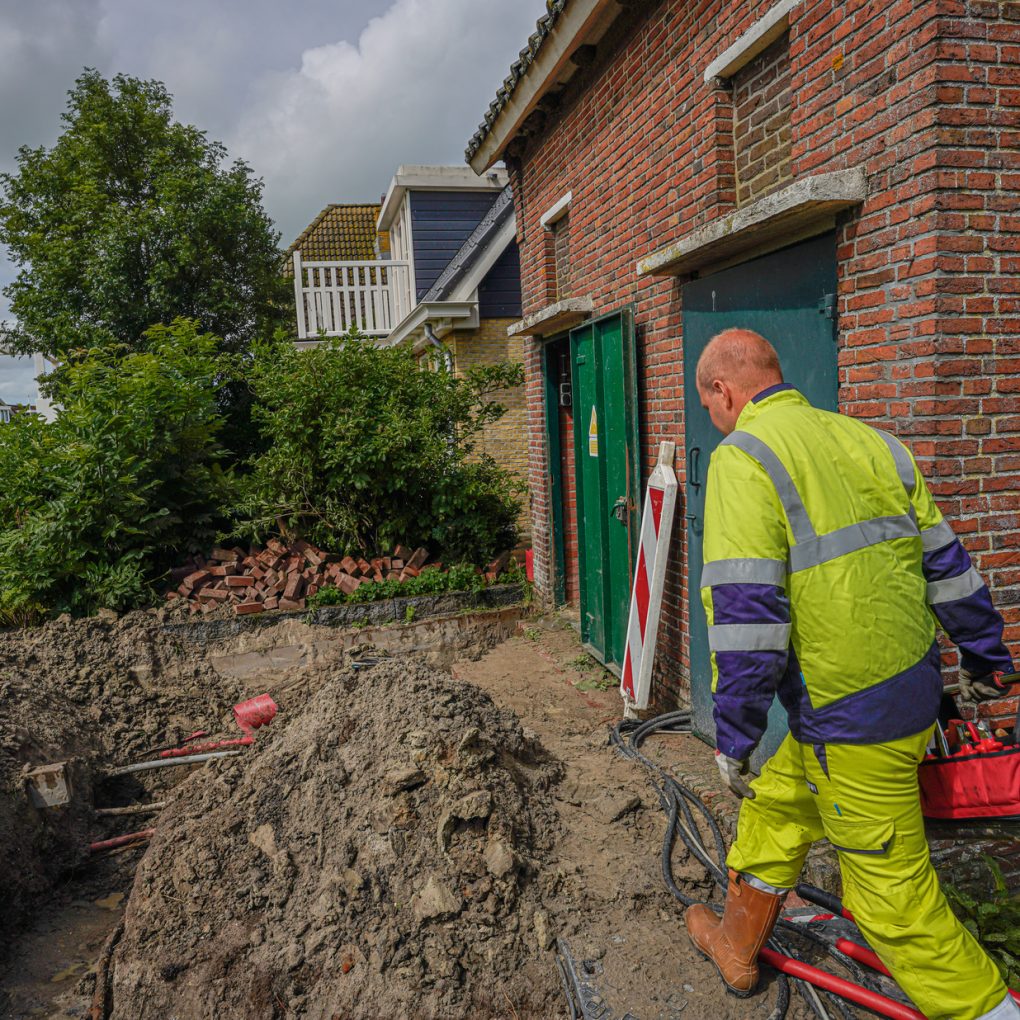
Alliander invests record-breaking amount in energy networks, but power grid congestion is set to remain for at least 10 years
The sharp growth in the number of heat pumps, solar panels and e-boilers, electrification of business processes and installation of charging points for passenger transport and electric trucks continued in 2023 and will also continue in the next few years. In addition to this, a large part of the industrial sector still needs to become more sustainable, home construction ambitions are huge and efforts to improve the sustainability of existing homes will also place great demands on the power grid. For many years, these developments will continue to far outpace network expansion capabilities.
Firm choices essential for acceleration
Maarten Otto, Alliander’s CEO: “Last year, we invested over €1.4 billion in our energy networks. That’s another record. And the investments are necessary, as we are working on the largest ever renovation of the energy network. But just like every renovation, this is not without disruption. This means, among other things, that the power grid in the Netherlands will remain congested for at least another 10 years, because it is almost completely full. The impact of this is huge. Companies, schools and newly built homes will no longer be connected at the desired time, and consumers will have to wait longer for things like heat pumps or charging points to be connected. We find this deeply regrettable, so we are building as fast as we can to expand the energy network. We are substantially upscaling our operations, recruiting more technicians and innovating our processes. This will enable us to construct 23,000 transformer stations, put tens of thousands of kilometres of cables into the ground and modify or build hundreds of power stations over the next 10 years. Between now and 2050, one in every three streets will have to be open to develop the energy network of the future. In addition, we are maximising the load on the existing network where possible and aiming for flexibility solutions, like avoiding peak times, to help as many of our customers as possible. However, it is also important to emphasise that the negative effects of the full power grid will continue for many years.”
Alliander is building as fast as possible, but is also hitting its limits. In order to accelerate even more over the next 10 years, firmer choices will have to be made. The renovation of the energy system requires choices that sometimes prioritise the solution for the whole street, district or region over a solution for an individual customer. While that is an unpleasant message, it is clear that we cannot do everything right now and at the same time.
Maarten Otto: “Wherever we can, we are improving our approach to work faster. For example, by using innovations, such as the compact connection module. And by building modularly and further digitizing our work. At the same time, we need everyone’s help to accelerate. We ask our customers to use the available energy smartly and we work with them to develop new products that allow us to get the most out of the existing network. We call on provinces and municipalities to make faster and clearer choices about where power stations can be built, where transformer stations will fit in and where, for example, district heating networks are to be constructed. And we ask the new cabinet to consider allowing the deployment of foreign technicians, so that we can find more people to do the work in the near future. It will also be essential for the government to determine, together with the network operators and parties such as the industrial sector, where alternative energy carriers like hydrogen and green gas could be important and should be made available.”
Changing energy system
The energy transition also requires a major change to how energy is used. Peak supply and demand times vary greatly, which eliminates the certainty of a constant electricity supply. This means the power grids need to be drastically upgraded and expanded and, where possible, we need to be flexible and increase loads to get everything we can out of the grid. This requires a lot of patience from businesses and consumers until the grid has been expanded or solutions have become available. But this is also a great time to start thinking differently about energy usage. It all starts with saving energy. Because energy that is not consumed does not have to be transported over the power grid. This is one-way businesses and consumers can help work towards solutions.
In addition to this, it is becoming increasingly normal for businesses and households to use less electricity or supply electricity at times when it is busy on the power grid. Last year, steps were already taken to make this more appealing to businesses with contracts offering lower tariffs outside of busy periods, thereby reducing the pressure on the grid at those times. The next step is making flexible use of the grid financially appealing to consumers by automatically adjusting heat pumps, charging points, home batteries and solar panels to the available grid capacity. This will encourage households to lighten the load on the grid during busy periods and will ensure that several households in a district can improve their sustainability with hybrid and electric heat pumps and electric vehicles without having to wait for the power grid to be upgraded.
Financial results
In 2023, Alliander achieved a net profit of €267 million (2022: €198 million). Operating income for 2023 came in at €2,779 million (2022: €2,213 million). Operating expenses showed an increase to €2,347 million (2022: €1,903 million). The negative cash flow for 2023 came in at €545 million (2022: €712 million). Total investment, mainly attributable to maintenance and expansion of the gas and power grid, was €1,411 million in 2023, up €183 million compared to 2022 (2022: €1,228 million).
Walter Bien, Alliander’s CFO: “Alliander ended 2023 with positive financial results. At the same time, we still have significant financing requirements considering the massive investment challenge we will be facing in the years to come. Key steps were taken in 2023 to retain Alliander’s solid financial standing. In July 2023, the Dutch Trade and Industry Appeals Tribunal (CBb) delivered a positive judgment in the appeal proceedings of the joint network operators against the ACM’s method decisions. This means that the ACM will be making adjustments to ensure that the income of the network operators is more in line with the rising costs. In addition to this, an agreement was reached on the sale of Kenter in 2023, and the transfer of shares was completed in January 2024. The ACM judgment and the proceeds from the Kenter sale have improved Alliander’s financial standing for 2024 too.”
Work completed
2023 saw 2,207 transformer stations (2022: 2,016 transformer stations) built or converted and 2,518 kilometres (2022: 2,212 kilometres) of new medium and low-voltage cables installed. A total of 304 kilometres (2022: 255 kilometres) of gas pipes were installed. These are mainly replacements to keep the gas network reliable and safe. A total of 43,626 (2022: 44,096) low-volume connections to the power grid were created, as well as 1,022 (2022: 1,039) high-volume connections. As expected, the number of new connections for gas consumers dropped last year. A total of 2,202 (2022: 3,700) low-volume connections to the gas network were created, and 56 (2022: 105) high-volume connections.
For more details, see Alliander’s 2023 Annual Report
